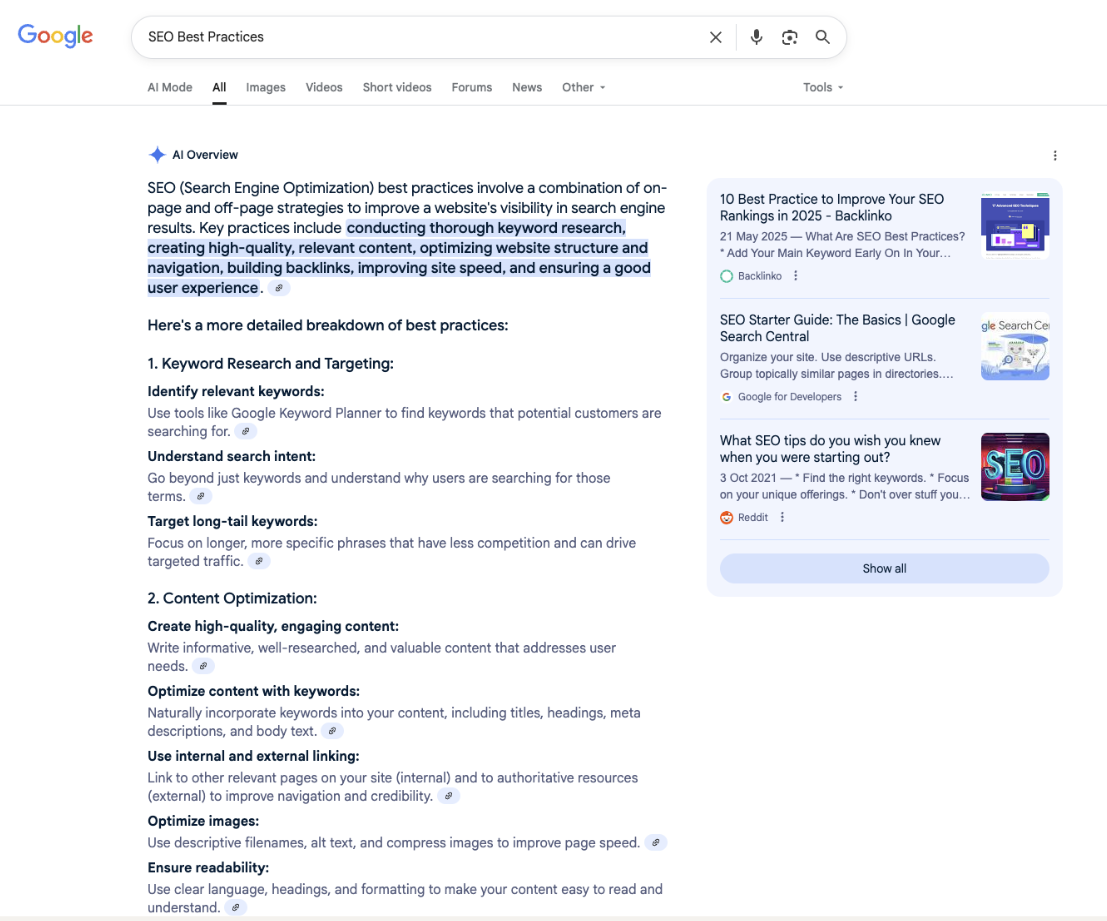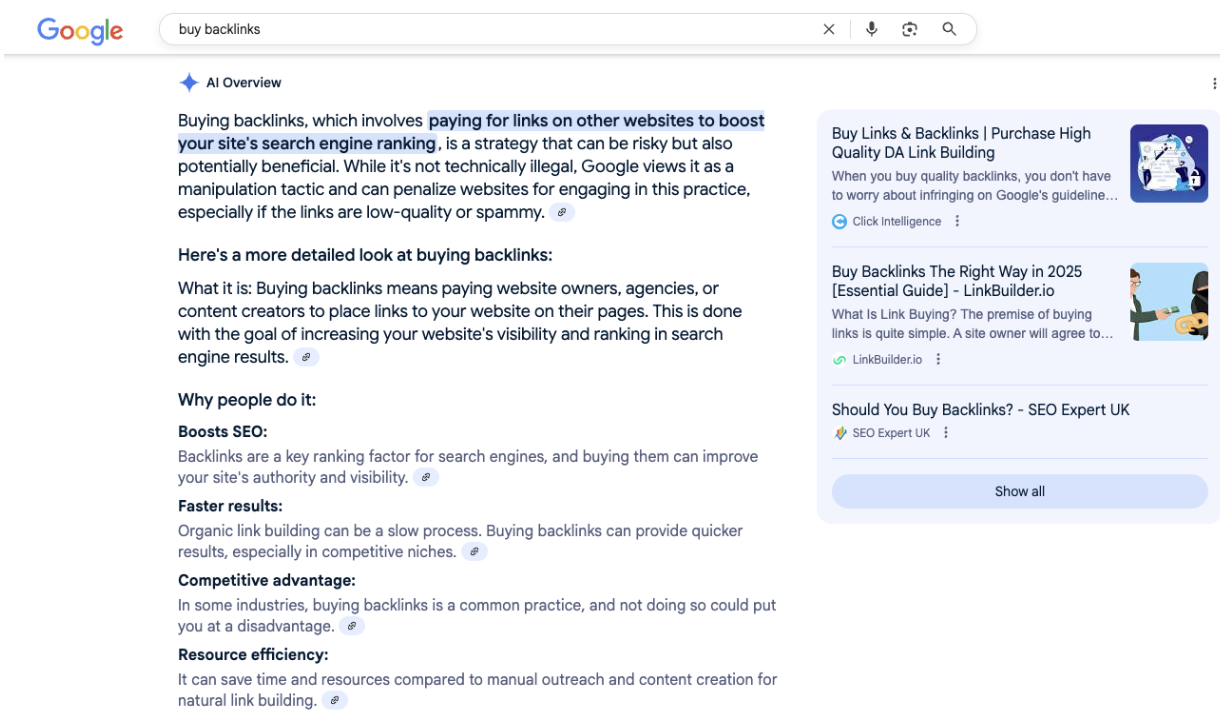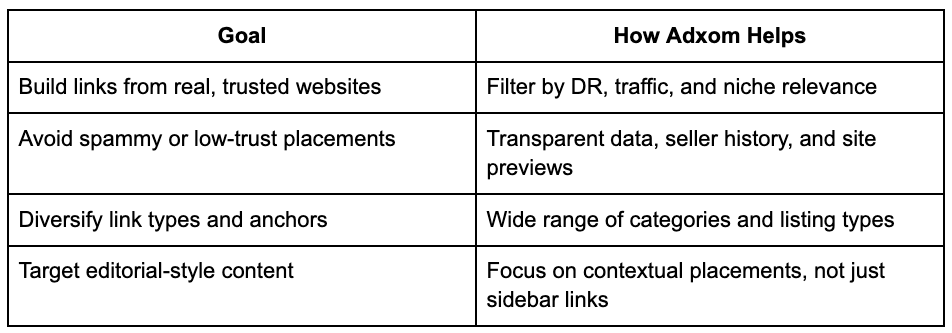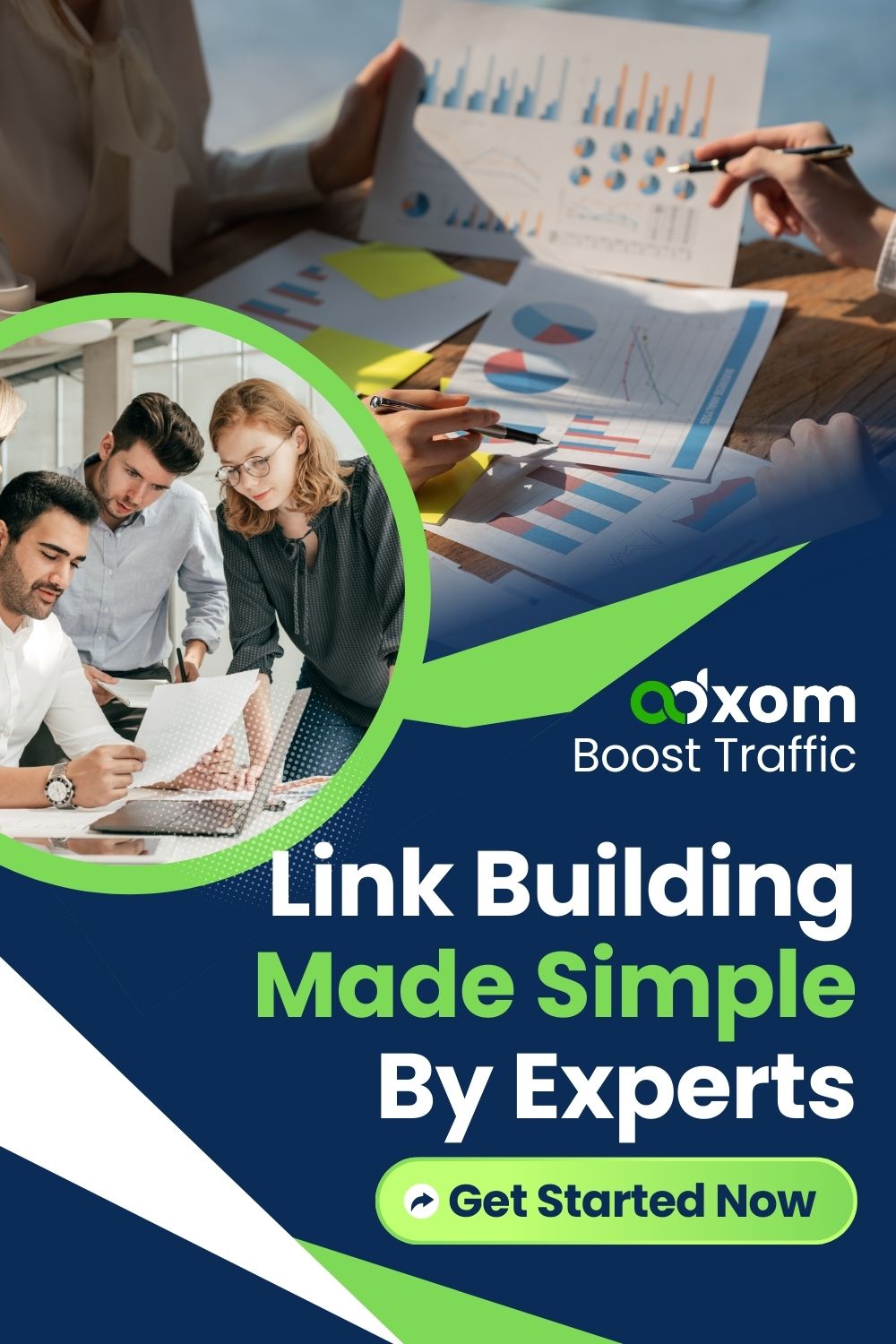How Google’s AI Overviews Will Change Link Building Forever
 (7).jpg)
The Future of SEO Is Already Here, And It’s Disrupting Everything We Thought We Knew About Links.
For over two decades, backlinks have been a foundational ranking signal in Google’s algorithm. SEOs have fine-tuned link building strategies to feed crawlers, pass PageRank, and win first-page rankings.
But now, with the rise of AI Overviews (formerly SGE), everything is shifting.
As Google continues to integrate AI-generated summaries directly into the top of the search results, the structure of visibility has changed and with it, the role of backlinks is being redefined.
This isn’t just another Google update. It’s a paradigm shift. And if you're still building links the same way you did even a year ago, you're already behind.
What are AI Overviews?
AI Overviews are generative summaries that appear at the top of the SERP for certain queries. Google’s large language models analyze web content and attempt to deliver direct, synthesised answers, often without the need for a click.
These summaries pull from various sources, cite some of them (but not all), and reduce the traditional 10-blue-links model to background noise for many searchers.
Key characteristics:
- Appears above organic results
- Synthesises multiple pages into one answer
- May cite sources but not always visibly
- Reduces the need to click through for answers
For example: When you search for “SEO best practices”, the first thing you see is an AI-generated summary, not a traditional clickable link. Organic results are pushed below the fold, making it harder for even top-ranking pages to get visibility.

Why This Changes the Game for Link Building
Traffic No Longer Follows Rankings by Default
Ranking #1 organically used to guarantee visibility and traffic. But now, with AI Overviews leapfrogging the organic results, even high-ranking content can go unseen, unless it’s cited within the AI block.
Implication: Backlinks built just to climb organic rankings might not drive the same ROI if visibility is siphoned by AI summaries.
AI Is Deciding Which Sources to Trust — Not Just Algorithms
Google’s AI models are selecting and blending sources algorithmically. But these aren’t just based on DR, DA, or sheer link volume. The AI looks for:
- Content clarity and structure
- Topical depth and authority
- Semantic relevance
- Trust signals from multiple sources including mentions, citations, and diverse backlinks
For Example: When you search for “buy backlinks”, Google now displays a rich AI Overview that explains the concept in detail; before you see any traditional links.
What's striking is that this AI-generated content covers what buying backlinks means, why people do it, and even outlines potential benefits, all without directly linking to any of the visible organic sources.
The websites featured in the sidebar (e.g., LinkBuilder.io, SEO Expert UK) aren't clearly credited in the AI Overview itself. This shows that Google’s AI is synthesising knowledge from multiple sources, but selectively choosing which (if any) to attribute visibly.
In this new landscape, it’s not enough to rank well; your content must be semantically relevant, deeply trustworthy, and structured in a way that AI understands and prefers.

Implication: Link quality, variety, and context will become more important than raw quantity or legacy metrics.
Brand Mentions May Matter as Much as Anchor Text
In AI Overviews, traditional anchor-text backlinks may not be the strongest signal. Instead, brand mentions, citations, and topical references across authoritative domains may be more impactful in determining whether a source is cited.
Implication: You’ll need to build a backlink profile that includes unlinked mentions, branded citations, and topical references; not just keyword-optimiSed links.
What This Means for SEOs and Link Builders
Shift from “Rank-Chasing” to “Citation-Chasing”
Start building links to get cited in AI summaries, not just ranked in blue links.
- Focus on authoritative domains within your niche
- Build context-rich content with expert-level information
- Aim to become the source that AI relies on
Diversify Your Link Profile for Semantic Relevance
AI looks at topic clusters, not just isolated keywords. A natural, diverse backlink profile signals broad relevance.
- Vary anchor text: branded, long-tail, natural language
- Earn links across subtopics within your niche
- Prioritise editorial placements over link dumps
Don’t Ignore the Power of Brand Mentions
Even unlinked mentions on trusted domains can influence AI outputs.
- Use PR-style link building (guest posts, interviews, roundups)
- Target publications that regularly get indexed and crawled
- Monitor and encourage mentions alongside backlinks
Reevaluate Link Placement Strategy
AI Overviews pull from content that is well-structured, frequently updated, and clearly authoritative.
- Get links on informational content, not just link pages
- Choose websites with active editorial oversight
- Avoid link farms and generic guest post farms as they won’t pass AI trust signal
How Adxom Can Help You Adapt
Adxom is more than a marketplace; it’s a tool for building future-proof authority.
Here’s how you can use Adxom to thrive in the AI Overviews era:

And unlike traditional outreach, Adxom gives you immediate access to publishers who already meet the criteria that AI favoUrs: relevance, authority, and trust.
Final Thoughts
AI Overviews are not killing link building; they’re evolving it.
Links are no longer just about rankings. They’re about trust. Authority. Being the source AI considers worth citing.
That means your backlink strategy needs to get smarter, more nuanced, and more focused on semantic and editorial value.
If you're still buying links like it’s 2015, you're not just wasting budget — you're being ignored by the most important algorithm of the decade.
It’s time to build backlinks for the AI age. And Adxom is the place to start.
